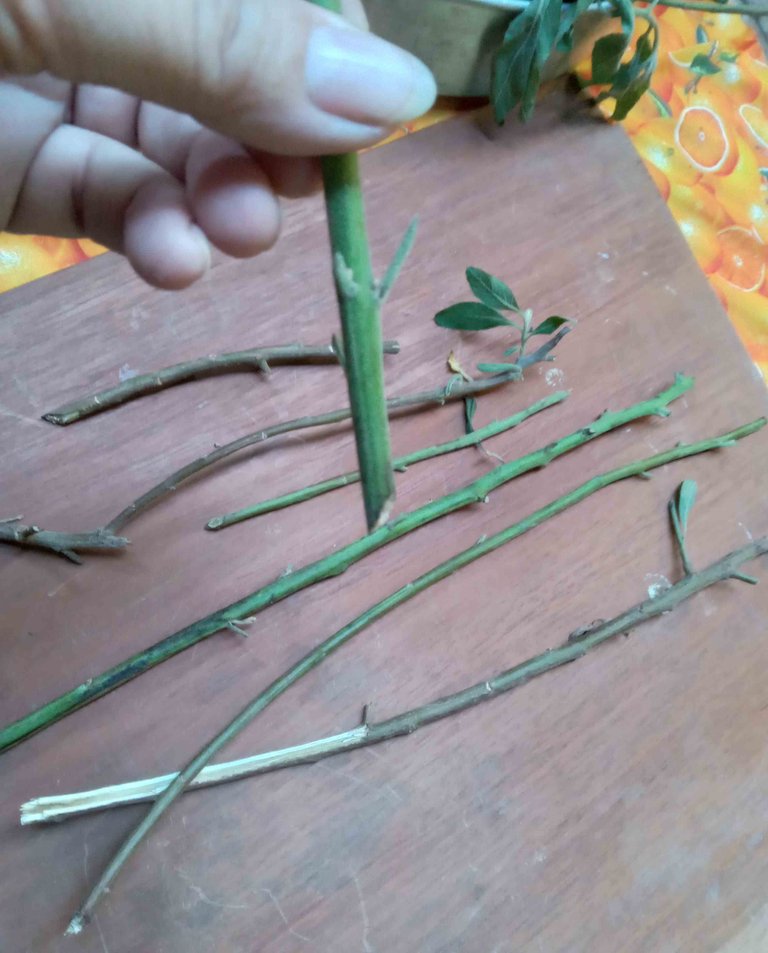
Greetings in this new year 2025, a hug, extending my wishes of prosperity and health to the readers of this community. In my post yesterday, I told you about the plant known in my country as Salvia bitter, whose scientific name is Pluchea carolinensis. It is not really a sage, but it is similar. This species is native to the American continent, and can be found in much of it.

Yesterday I showed you how I took advantage of a large part of the plant material from this plant (branches and leaves), which a friend gave me, and I told you that I would share the way in which I aspire to reproduce this species, for which I reserved the thickest branches, in order to apply the cutting technique.

The plant was uprooted very abruptly, so it had tears in the branches, so I proceeded to make angular cuts at the bottom of each cutting, using scissors and a large serrated knife. I also removed the leaves, since these would prevent the cutting from taking root.
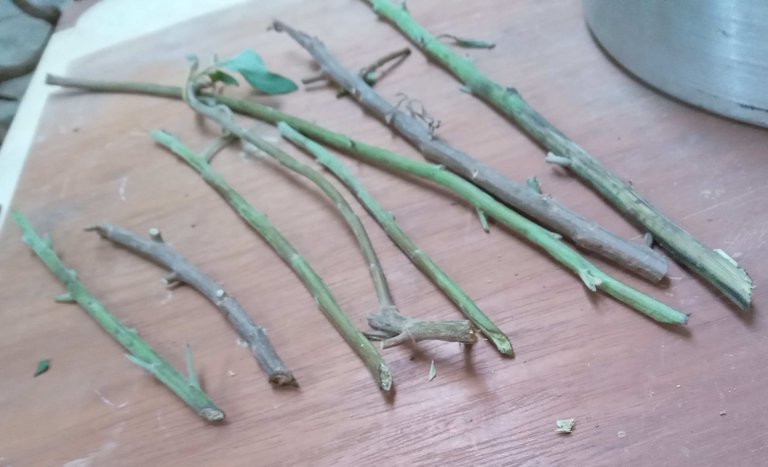

In a YouTube video I could see that they recommended using the gel that has the aloe vera stalk or leaf, in order to make a natural rooting agent. They also recommended applying cinnamon powder, in order to avoid infections in the cut and help healing. Since I had both elements at home, I took a teaspoon of cinnamon and a small aloe vera leaf. I proceeded to insert each cutting into the stem, moistening it well with its gel. Then I soaked the previously moistened area with cinnamon powder. This is what I did with the 8 cuttings I had to plant.
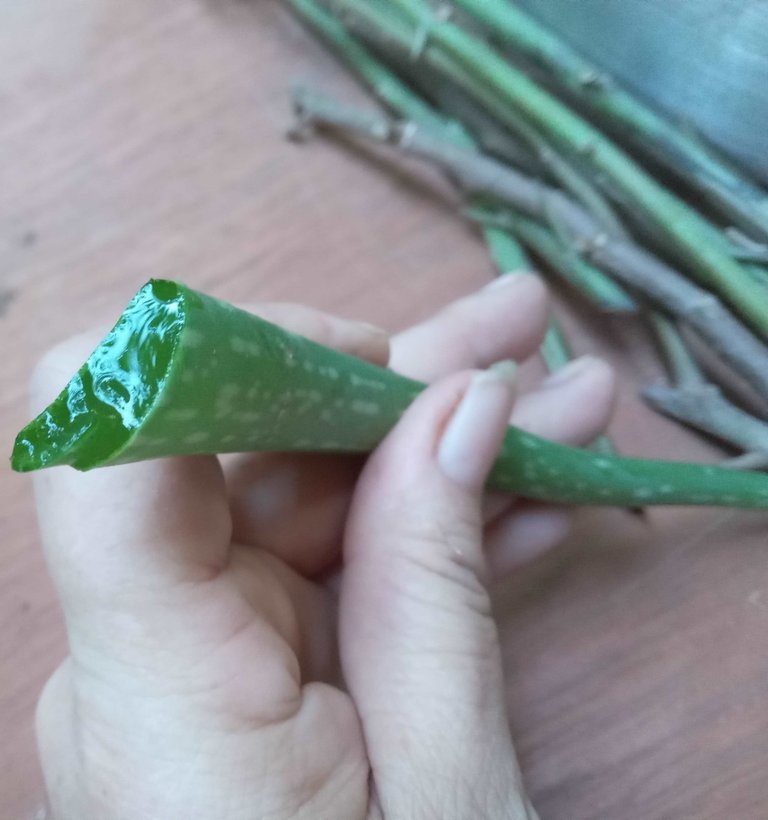
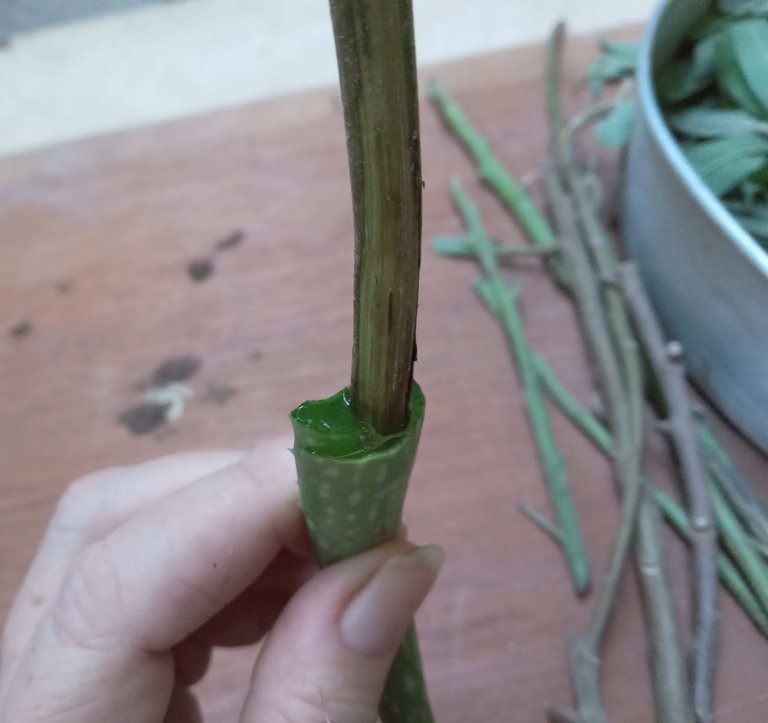
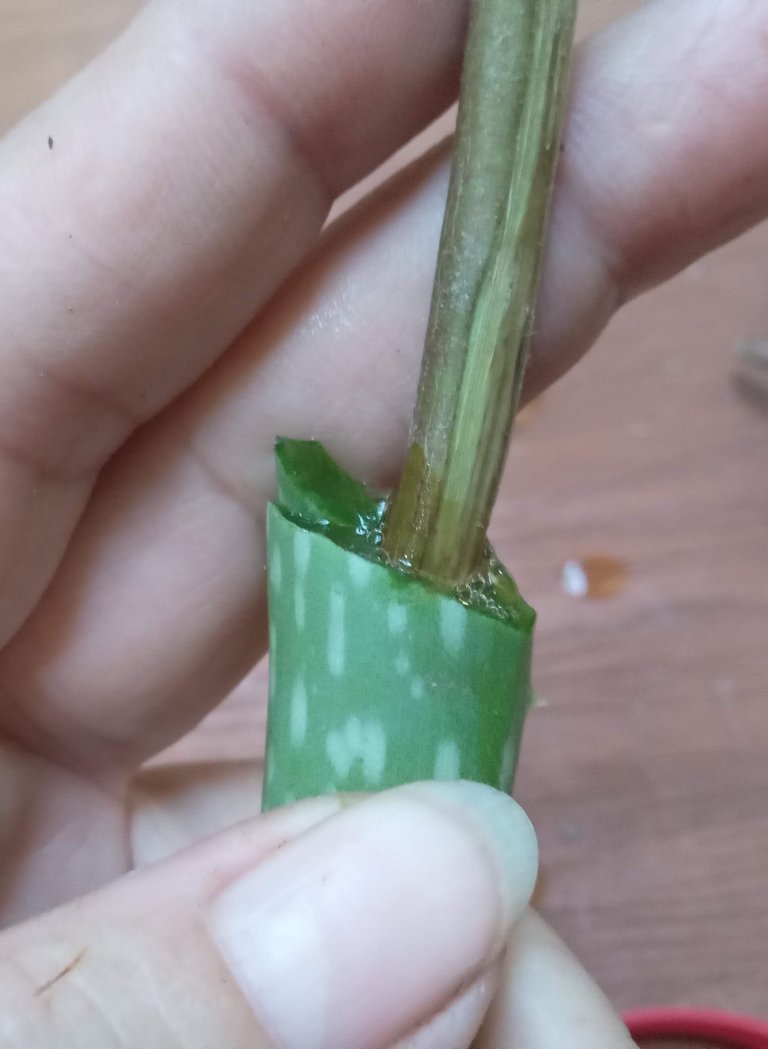
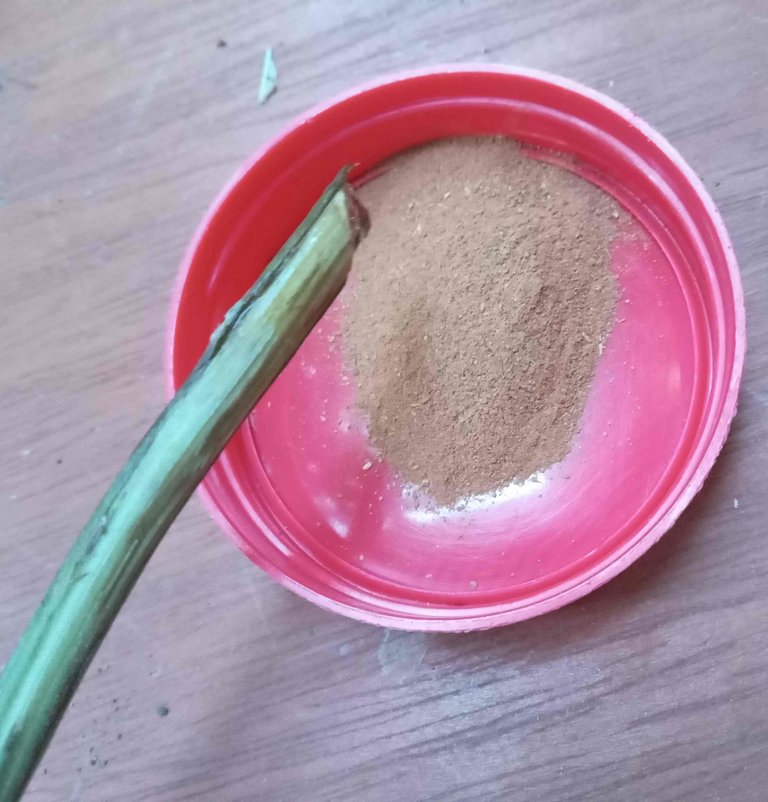
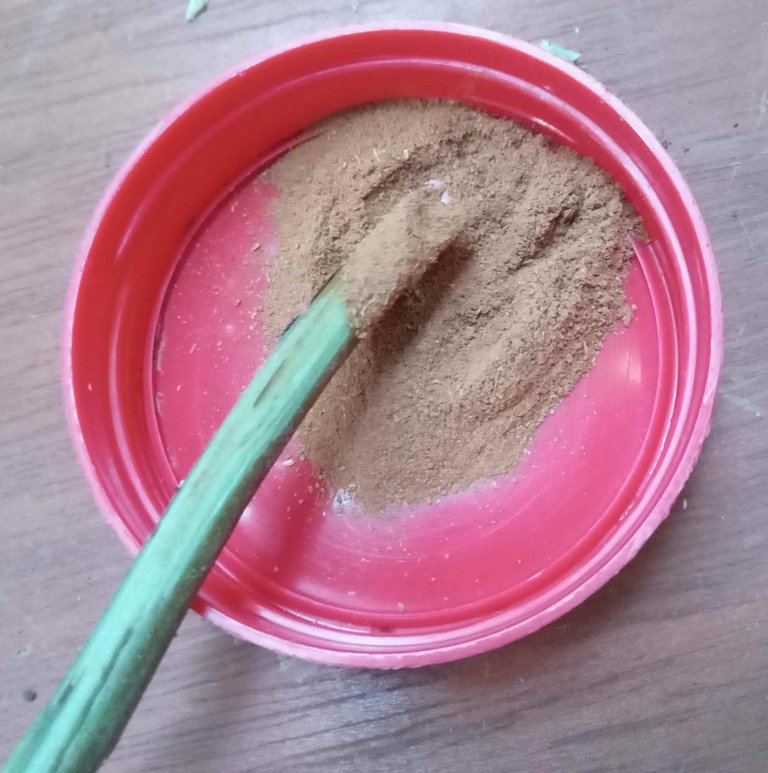
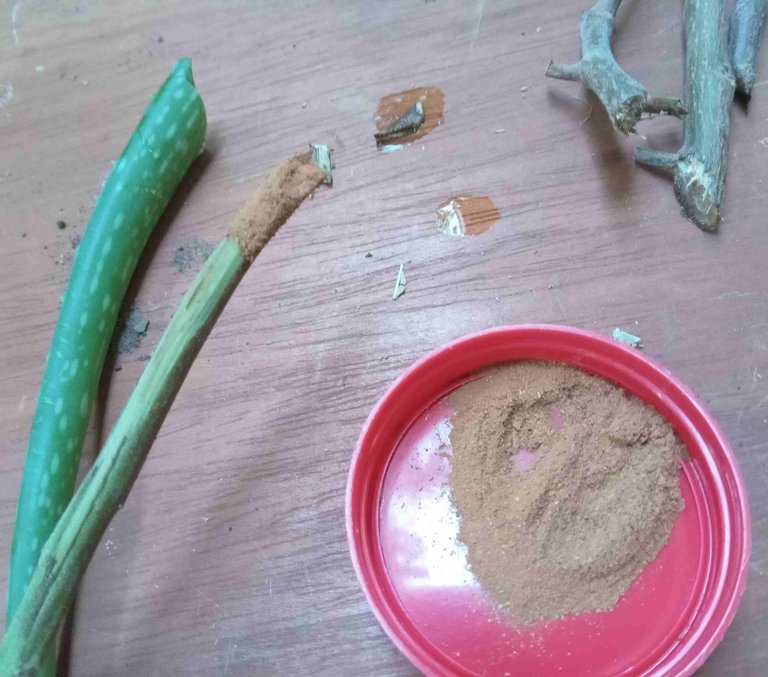
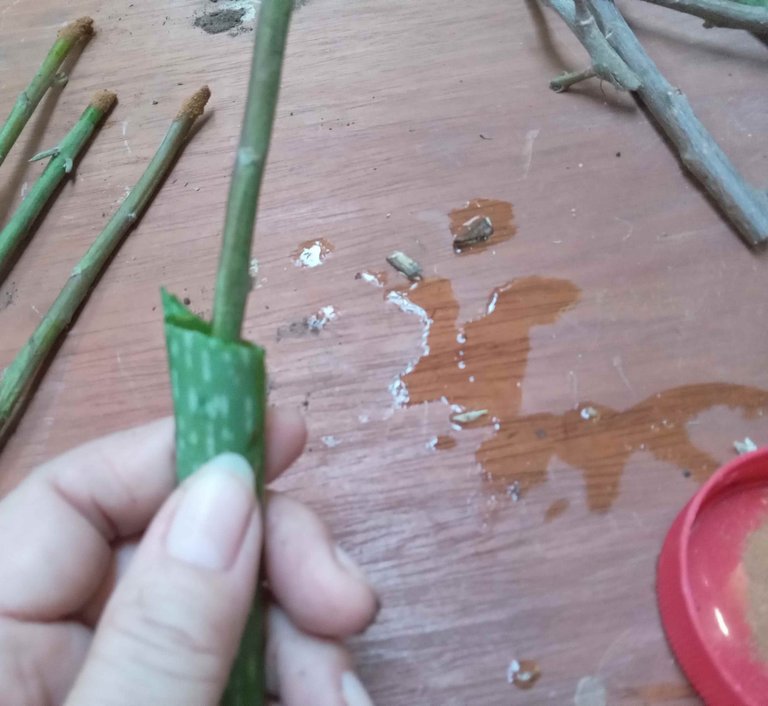
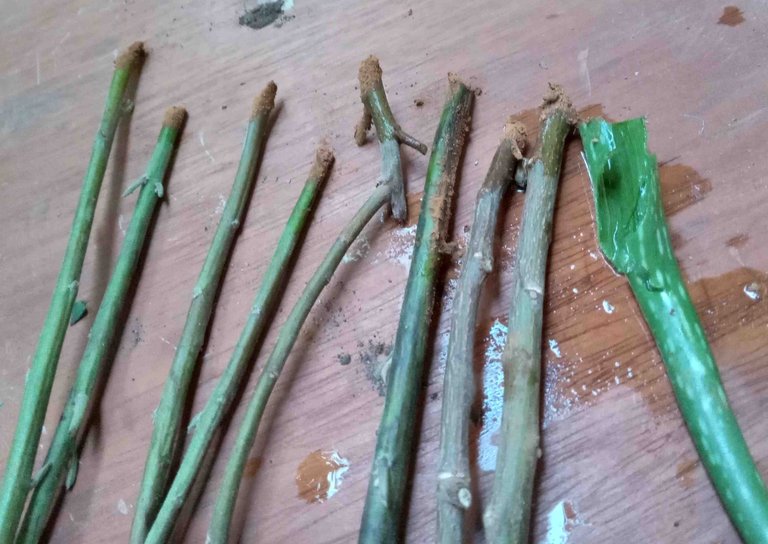

Coincidentally two days ago, I had collected some soil from the lot to put on the plants I have in the indoor garden. This soil is well aerated, it is not compact, due to the plant remains in it, it is a suitable soil for planting cuttings, because it is loose, aerated, and would allow the young roots to grow without pressure. I proceeded to fill two pots and moisten them well. Then I made four holes in each of the pots, helping myself with a stick.
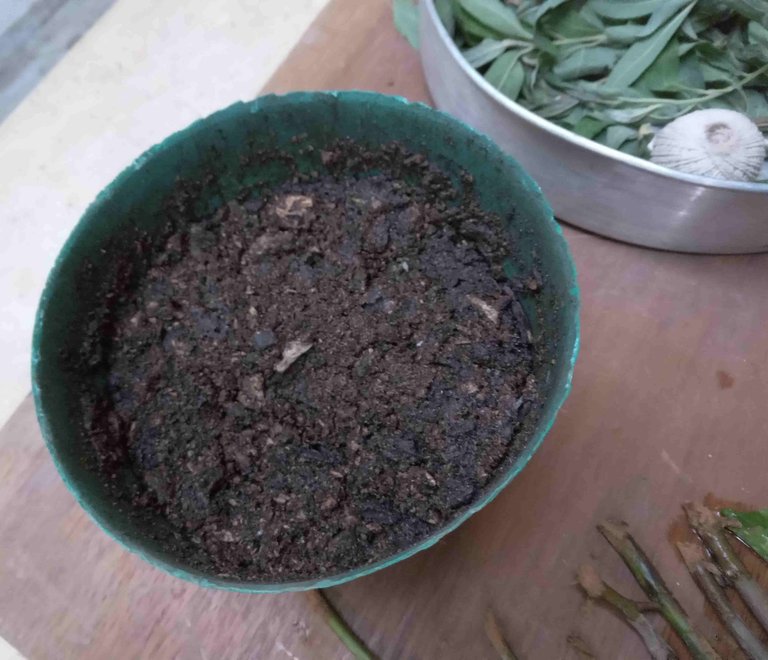
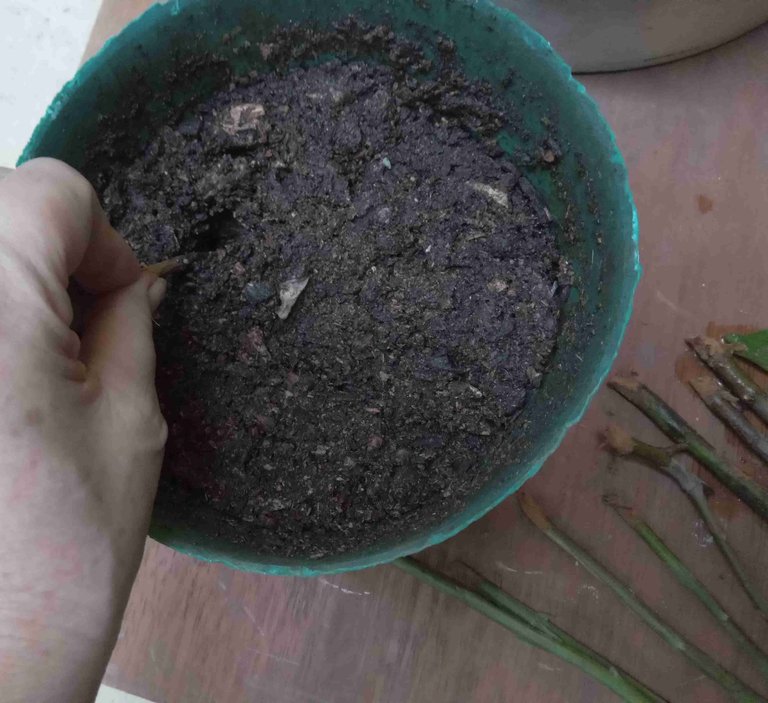
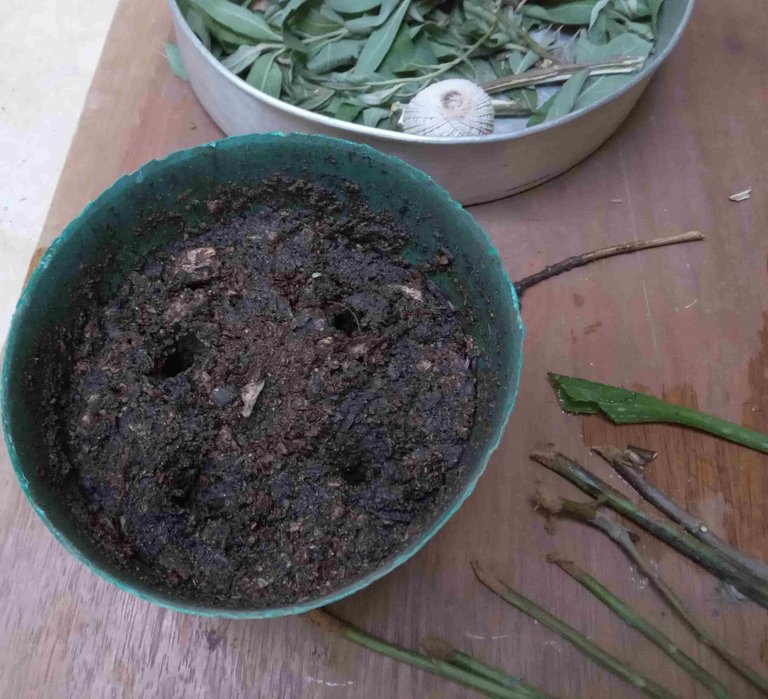

Once I made the holes in the ground, I proceeded to insert a cutting into each hole, specifically the part impregnated with aloe vera and cinnamon gel, with the intention that they can take root. At this point I want to point out that we have to be careful when we plant the cuttings, because since they no longer have leaves, we can get confused and plant them upside down, which happened to me on this occasion, I planted one upside down (and there was also one impregnated with aloe vera and cinnamon on the wrong side). I realized after a while and took it out and planted it properly.
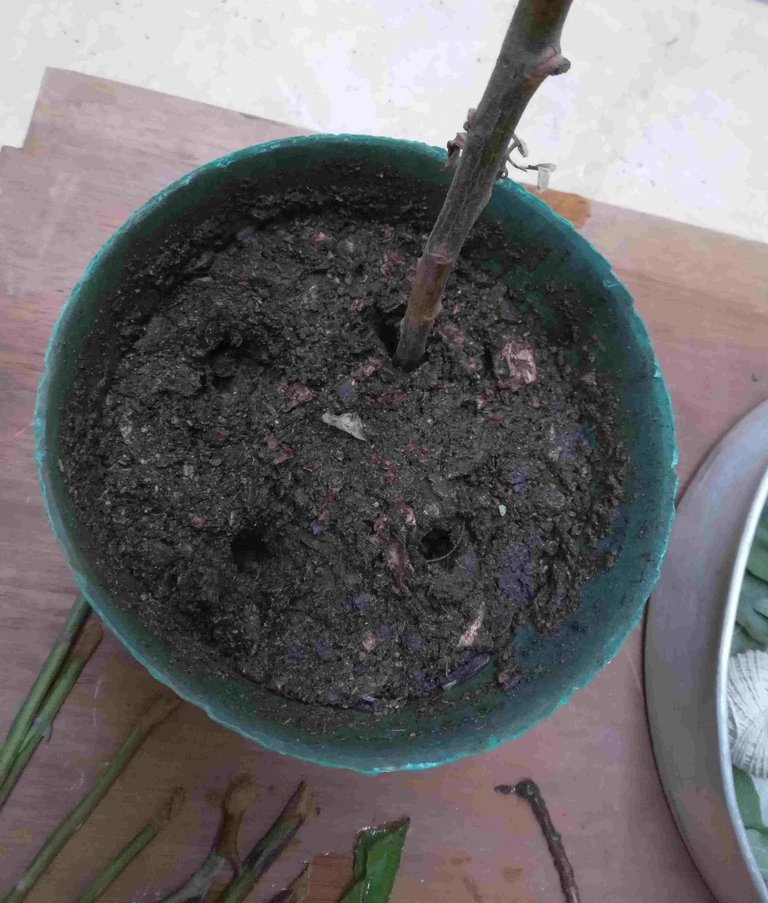
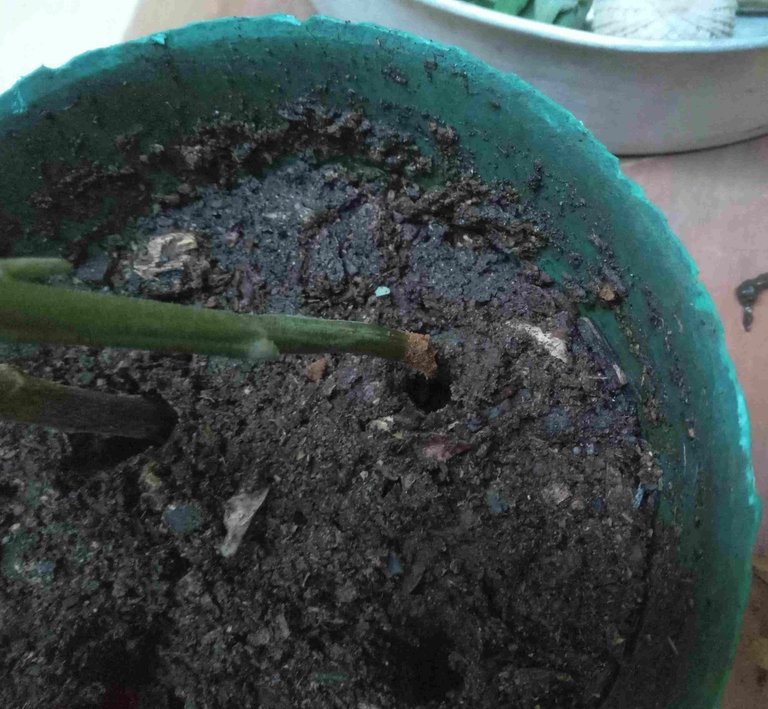
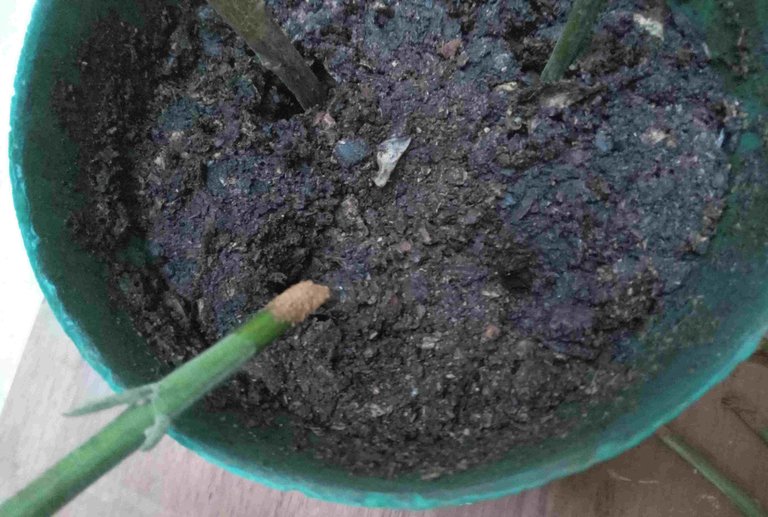
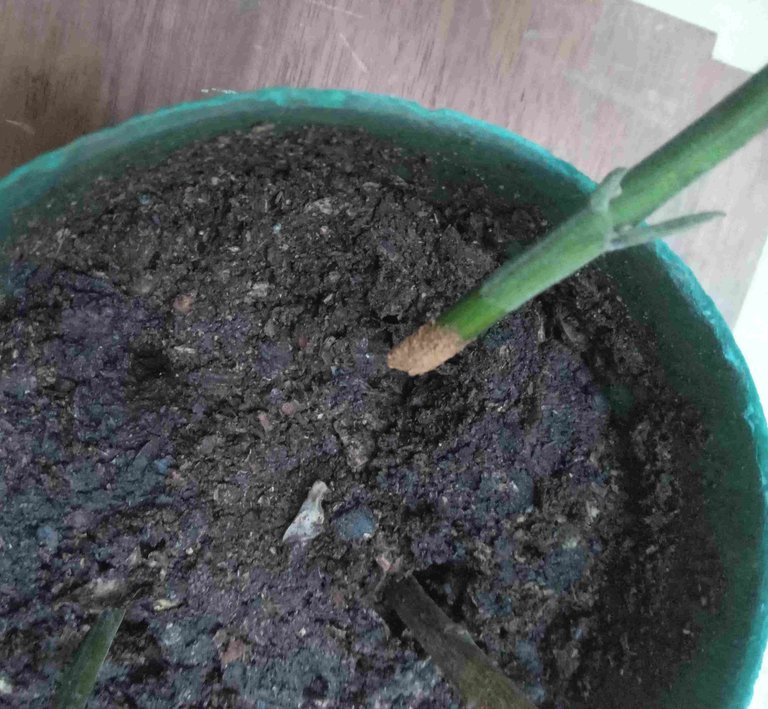
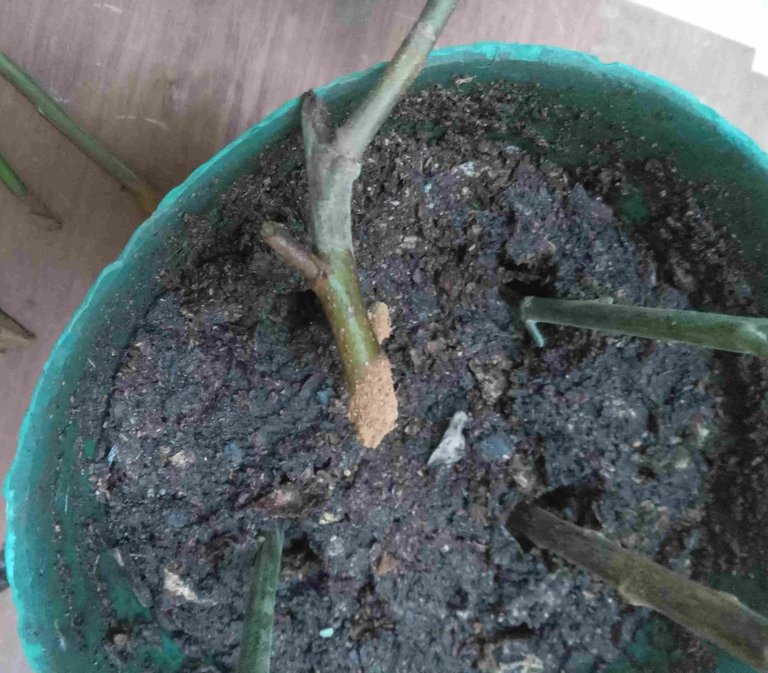
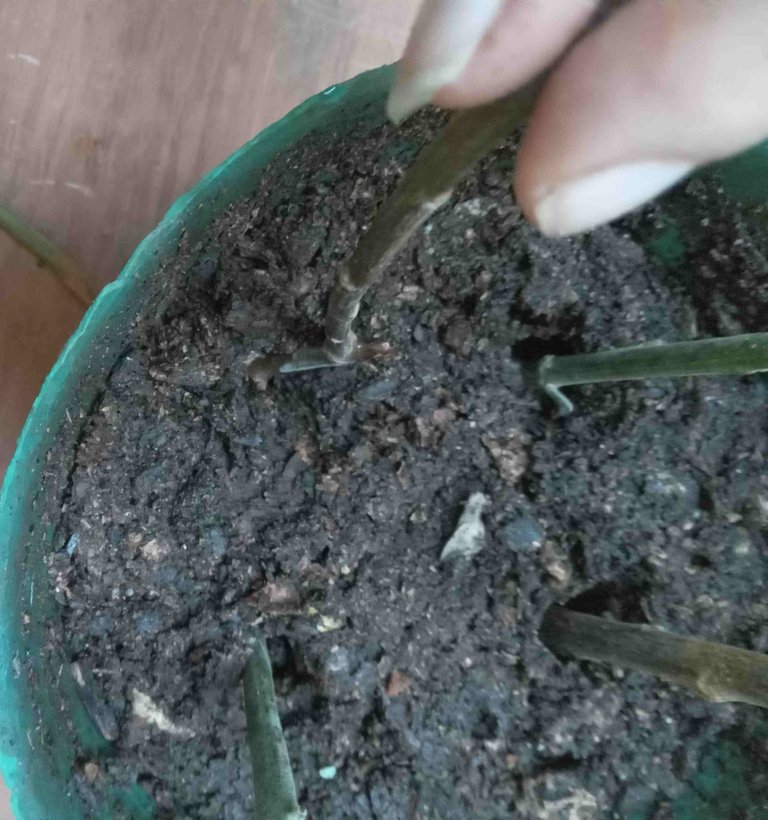

Every time I planted a cutting, I proceeded to compact the soil around it, so that the cutting was firm and vertical.
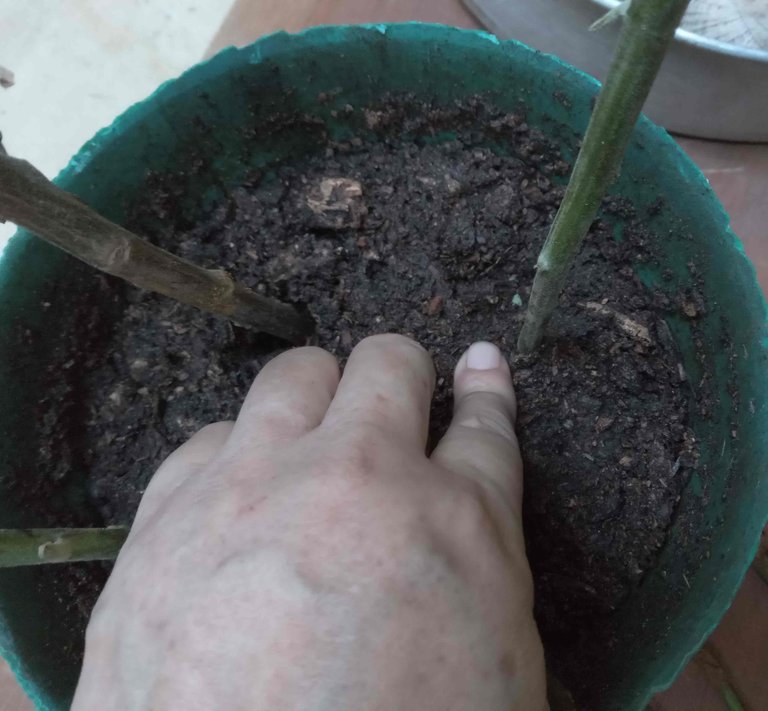

Once the planting was completed, I proceeded to take the pots to a shady place, where each cutting could root without problems and produce a beautiful bitter sage plant, a powerful and useful plant, which I hope to have in my plot. Soon I will be informing you of the evolution of this method of plant propagation.
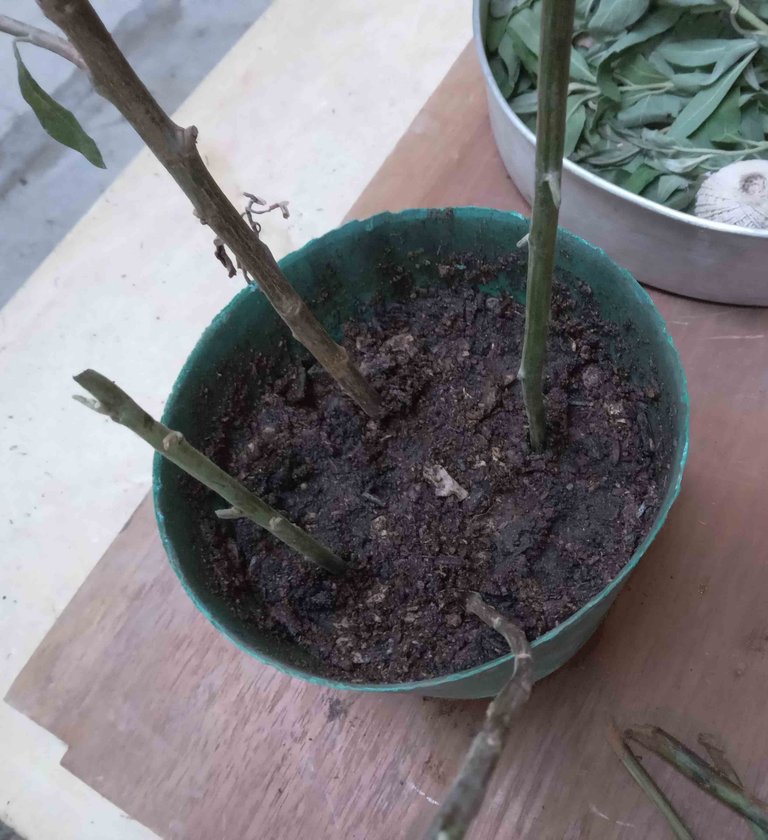
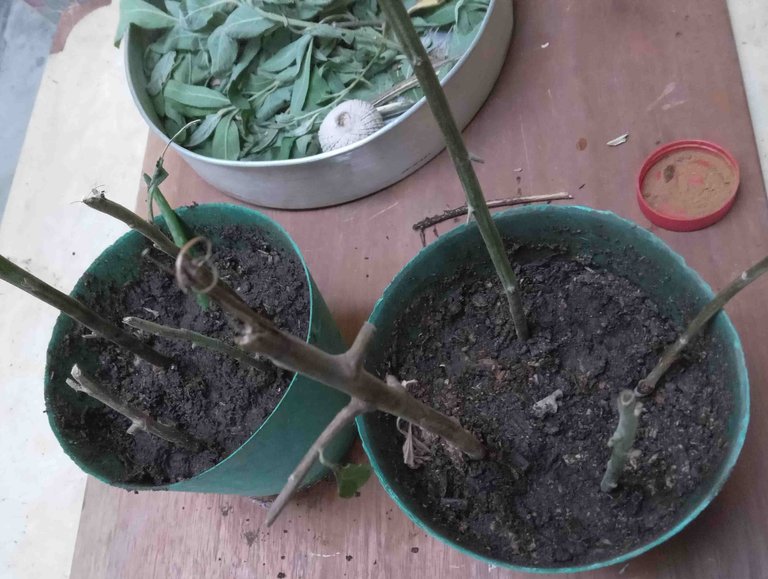




Todo el contenido, (excepto los separadores de texto) es de mi propiedad y está sujeto a derechos de autor // All content (except text dividers) is my property and is subject to copyright.




Delegations welcome!

Congratulations @sirenahippie! Your post has been a top performer on the Hive blockchain and you have been rewarded with this rare badge
You can view your badges on your board and compare yourself to others in the Ranking
If you no longer want to receive notifications, reply to this comment with the word
STOPThanks a lot @hivebuzz
Another milestone reached! Keep shining and setting new records on Hive @sirenahippie.